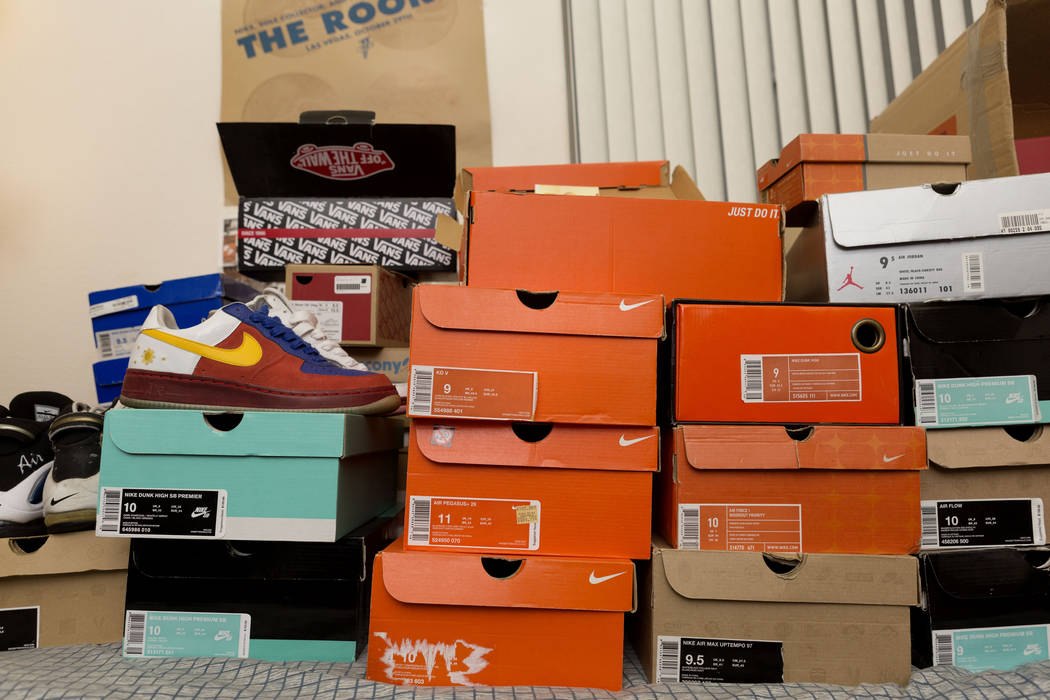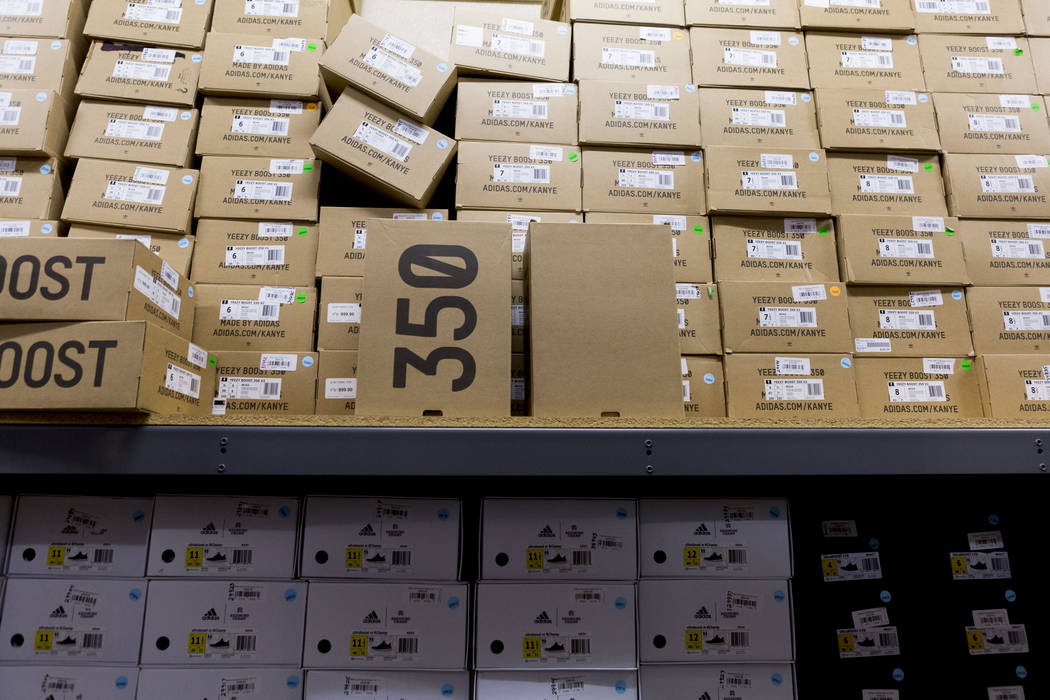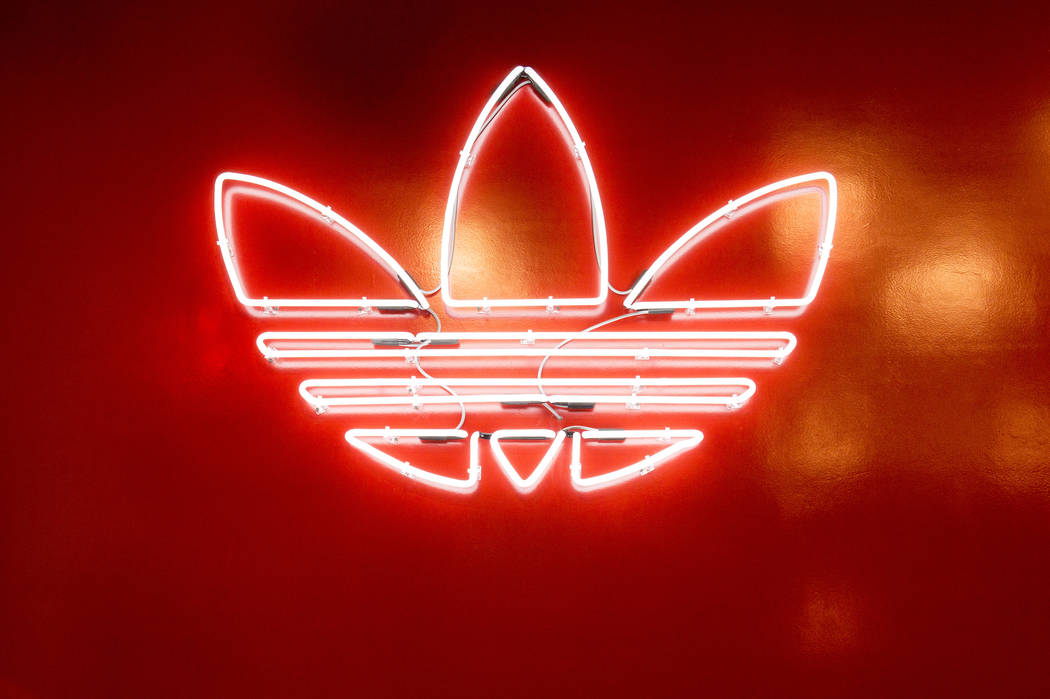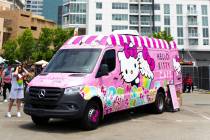Las Vegas sneakerheads foster culture of footwear and community

























It was 1985 and two years into Michael Jordan’s run as the greatest basketball player of all time. A new shoe hit the market, and with one logo, a culture that would outlast any player’s career was born.
Sneaker culture grew into a worldwide phenomenon, with people who live and breathe sneakers affectionately known as “sneakerheads.”
Fast forward 32 years. Sneakerhead and Las Vegas native Krys Fabriquier, 23, pulls a pair of the first red and black Air Jordans — carefully — out of his closet.
“These are from 1985, and then I have another pair from 1985 as well,” he says. “These are probably $500-$700 each.”
Fabriquier is the creator of the 21,900-member Facebook group, Vegas Sneaker Heads. The private group, which requires an invitation or approval to join, has become a hot spot for sneakerheads looking to sell or trade shoes.
“I never intended for it to be a marketplace,” he says. “It’s just cool when you enjoy a hobby or pastime together with like-minded people.”
The invention of social media allowed the sneaker head community to develop into that marketplace. Buying and selling wasn’t always easy.
“It was a chase; it was a treasure hunt back in the day,” says Francis Bustamante, a native Las Vegan and ower of Capital Sneaker Boutique in Town Square. “Back then you had to know a guy who knows a guy who knows of a store on the other side of the world.”
“Now you just type in “@yeezy” and a bunch of Yeezys will come up for sale,” he says, referring to Kanye West’s line of sneakers.
AGELESS, TIMELESS
Sneakerheads span generations. Customers waiting in line to buy rare and expensive sneakers can include a 40-year-old businessman looking to relive his youth with a pair of Air Jordans or a 15-year-old ready to spend his first paycheck on the newest pair of Yeezys.
Bustamante was that kid.
“For my first job, I would spend it all on shoes and I would take home two or three pairs a week,” says Bustamante, 26. “I worked at KB Toys for like $6 an hour and that was for a pair of shoes.”
Owning a sneaker shop where he resells hard-to-get and expensive shoes allows Bustamante the chance to be successful doing what he loves — learning about and selling sneakers.
“Back in the day if you wore sneakers where I come from, you would get robbed, so I didn’t really wear them. I just collected them for looks,” he says as he stands 15 feet from more than $5,000 worth of Yeezys stacked along a wall in his store. “To me it’s coming here, being happy. I could make $8 or $10 an hour, but as long as I’m happy, I’m good.”

Las Vegas currently has more than 10 sneaker stores, most less than 10 years old, that carry the upscale, high-end shoes that sneakerheads just can’t seem to get enough of.
“Just seeing the generations of people who are my age, in their 30s and early 40s, and all the stuff we wanted before,” says Donato Pagtakhan, co-ower of Clicks, a shoe and clothing store in Town Square. “We are making enough money now where we can actually relive our childhood.”

CLOSE-KNIT COMMUNITY
Fabriquier holds up two more pairs of shoes in the bedroom he has dedicated to his shoe collection.
“This is an adult-size model of the shoe I was wearing when I was in kindergarten,” he says. “They are called black and white Air Jordan 14s, and my dad got these for me when I was like 5.”

He talks about the community of sneaker heads as affectionately as he talks about family.
A few years ago, after he sold half of his shoe collection to raise money for his mother’s surgery, Fabriquier started receiving assistance from other sneakerheads in the Facebook group.
“I put up $1,500 just selling sneakers, and then I got donations through my PayPal account where people were just encouraging me,” Fabriquier says. “Everyone in the sneaker world out here knows each other.”
Jaysee Lopez, another member of the sneakerhead community and owner of Urban Necessities consignment store in Boulevard Mall, recently flew his mom to Las Vegas from New Jersey.

“I moved my mom here in September and told her that she never has to work another day in her life,” Lopez says. “But she’s literally in here every day, she’s really into it.”
Lopez bounces from customer to customer exchanging pleasantries and locating specific shoes that some customers have traveled thousands of miles to acquire.
“In almost three years we’ve gone through 40,000 pairs of shoes,” says Lopez, who calls his store a Disneyland for sneaker enthusiasts. “We are very lucky that we have such loyal sets of customers — the guys coming to make a dollar with us and the guys coming to spend.”
Years of internet research, communication with other sneaker heads and a lack of retail options in the valley are what led to his vision for Urban Necessities.
“I saw a pressing need for a safe haven of sorts for the sneaker heads,” Lopez says. “Now, we have a lot of people from all walks of life and it’s fun.”
Although shoes are what sneakerheads in Las Vegas have in common, it isn’t all about footwear. The handshakes, standing-in-line chats, phone calls and hugs are what make the community special.
“The stories behind the shoes are what makes it cool,” Bustamante said. “My friends were in gangs, my friends sold drugs, but I was interested in growing up in the sneaker community because it had more culture. I believe that being a sneakerhead is more knowledge than what you wear on your feet.”
Read more from Anna Williams at reviewjournal.com. Contact her at awilliams@reviewjournal.com. Follow @AnnaWilliamsRJ on Twitter.












